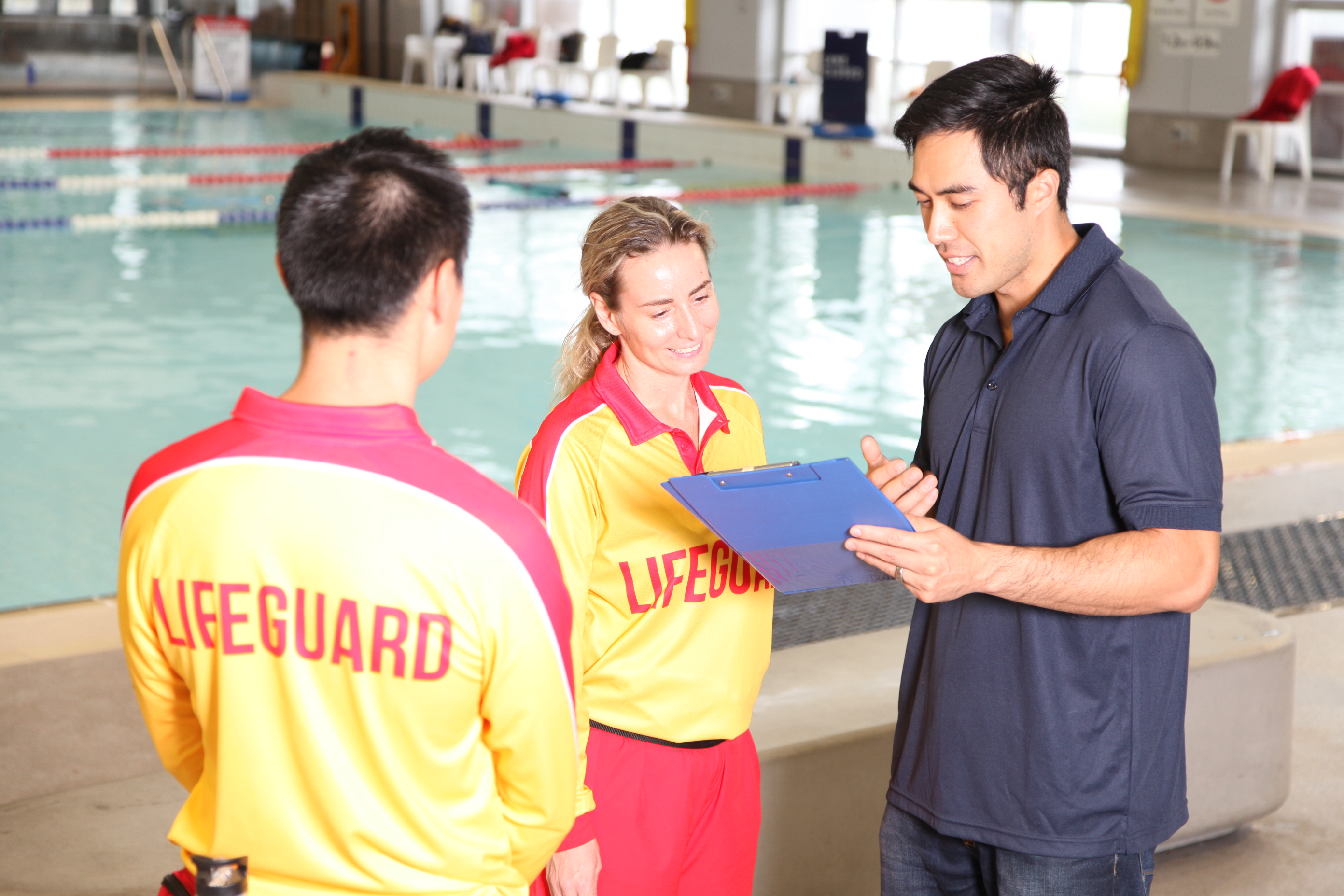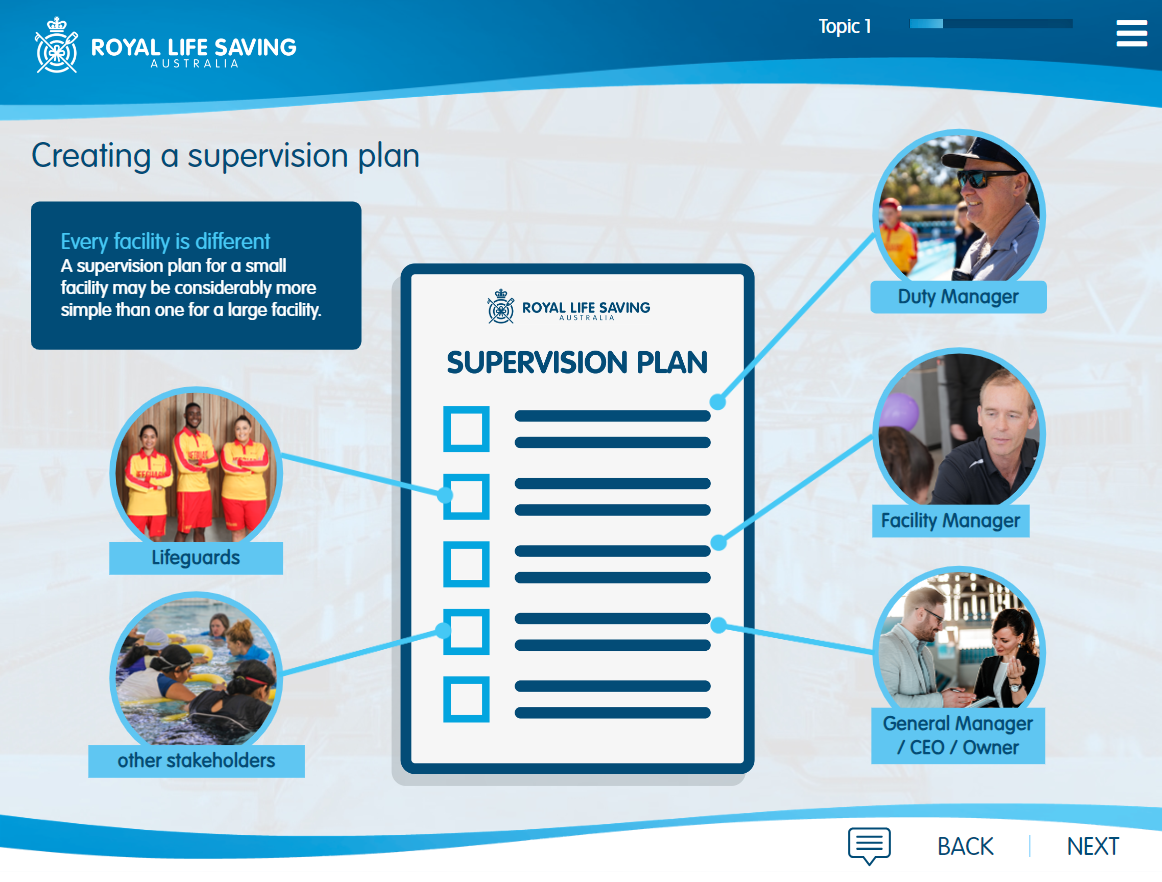Have you ever thought about what goes into creating an aquatic supervision plan?
As a starting point you need to consider the facility design, the environment, the bodies of water, the resources and personnel available, the types of swimmers, and the activities and events that take place. Already that is a lot, yet there is much more, and each component needs to come together to form a working system and plan that maximises patron safety.
This online module takes the learner through all the key processes and components that go into creating an effective and practical supervision plan. It is targeted at facility managers and duty managers; experienced lifeguards and those in lifeguard leadership and supervisory roles will also benefit greatly from completing the module.
The content is based on the Aquatic Supervision Planning guidelines within the Guidelines for Safe Pool Operations (GSPO). The module is highly visual and interactive with information and activities presented in a practical, easy-to-understand format designed for application in the day-to-day work context.
After exploring the underpinning principles and process of supervision planning, learners are guided through the process of developing a lifeguard deployment strategy at a mock facility. Here, learners are asked to identify hazards and high-risk areas, place rescue equipment, and determine lifeguard deployment, rotations, zones and rove patterns in response to a range of changing conditions.
The module:
- asks participants to reflect on their current knowledge, skills and experience developing and implementing supervision plans
- enables participants to better understand, interpret and apply the information contained within the aquatic supervision planning guidelines in the GSPO
- develops participants’ understanding of the risk management processes in the context of aquatic supervision
- steps participants through the process of developing a supervision system and supervision plan; highlighting key items for consideration in the planning and ongoing management process
- facilitates a deeper understanding of the key requirements and challenges of working with lifeguards and fulfilling lifeguard supervisory and management roles
After completing the module, those tasked with developing, implementing, and managing supervision plans will be able to do so with greater confidence and clarity. They will also be better able to contextualise a plan for the aquatic facility in which it will be deployed.
Completion of the module should contribute to meeting the requirements for annual in-service training for lifeguards as set out in the Guidelines for Safe Pool Operations (GSPO) – Aquatic Supervision. We strongly recommend the module for facility managers and duty managers, and experienced lifeguards that may be looking into leadership roles. Recommended learning time is approximately 50 minutes.
To enrol or find out more information use the search fields on this page and/or contact your local Royal Life Saving office.
Contact your local Royal Life Saving State and Territory Member Organisations (STMOs) to find out more about these courses and availability in your local area.
Note that Royal Life Saving Society – Australia National Office is NOT a Registered Training Organisation (RTO). All nationally recognised training is delivered by Royal Life Saving STMOs.


